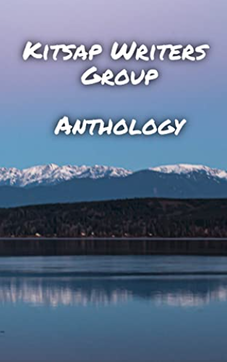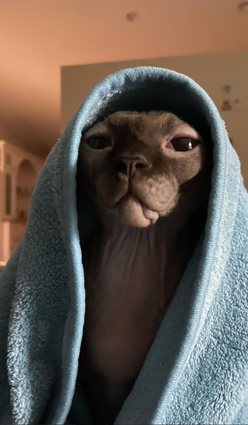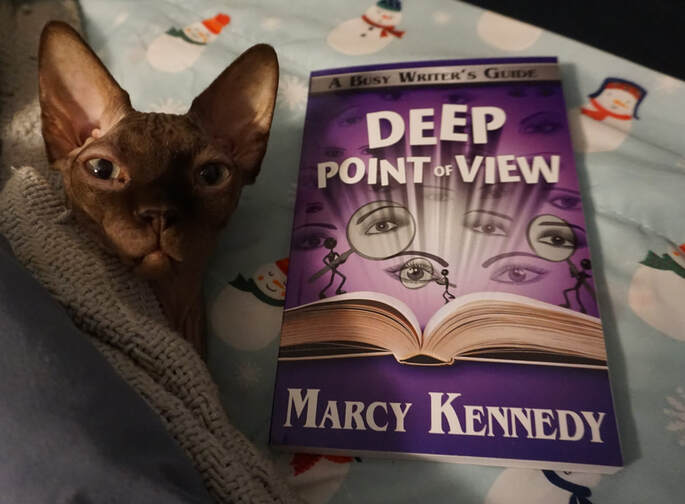|
The cover photo of the anthology was taken by contributing author Archie Kregear and was taken in Kitsap County. As 2021 was coming to a close, I thought time had run out for publishing news. Then I found out an anthology I was accepted to is officially published today! The Kitsap Writers Group Anthology was compiled by the very organized Emmett J Hall and has contributions from many members of our critique group. It covers sci-fi, fantasy, historical fiction, non-fiction, poetry, and more.
My story is science fiction and is titled "The Undoing of Maggie Jinkowski." This story won first place in the short fiction category at the Hampton Roads Writers Conference in 2019, which I announced way back then. I've been shopping for a home for the story ever since and this anthology felt like the right place at last. Currently only available as an ebook, a paperback should hit the market soon. I'm incredibly proud to be alongside so many great writers in this anthology, with stories that I've found gripping and well written. Here's to many more pub credits in the future!
0 Comments
As the year draws to a close, I thought I’d go back through my e-reader and see how much I’ve read. I know my reading took off in July with the start of my new commute (all public transit, reading was safe). This doesn’t count the five unpublished novels I beta read and the countless sections of bigger works I read for my writing groups.
For the Podcast: The Seven Husbands of Evelyn Hugo by Taylor Jenkins Reid Historical Fiction The Calculating Stars by Mary Robinette Kowal Science Fiction (Alt-History) Mexican Gothic by Silvia Morena Garcia Horror (Gothic/Historical) Outlawed by Anna North Western (Alt-History) Small Great Things by Jodi Picoult Contemporary (Legal Procedural) Writing Craft Related: Take of Your Pants by Libbie Hawker Deep POV by Marcy Kennedy (My Review) The Anatomy of Story by John Truby (My Review) The Rural Setting Thesaurus by Angela Ackerman and Becca Puglisi (My review) The Emotional Wound Thesaurus by Angela Ackerman and Becca Puglisi The Occupation Thesaurus by Angela Ackerman and Becca Puglisi (My review) For Fun: (age category is adult unless otherwise stated) Chain of Iron by Cassandra Clare YA Fantasy (Historical) Chain of Gold by Cassandra Clare YA Fantasy (Historical) Bury My Heart at Wounded Knee by Dee Brown Non-Fiction (Historical) The Fated Sky by Mary Robinette Kowal Science Fiction (Alt-History) The Relentless Moon by Mary Robinette Kowal Science Fiction (Alt-History) (my review of the series) Project Hail Mary by Andy Weir Science Fiction (Near-Future/Space) (my review) The Love Hypothesis by Ali Hazelwood Contemporary Rom-Com (my review) The Fifth Season by N.K. Jemisin Secondary-World Fantasy The Obelisk Gate by N.K. Jemisin Secondary-World Fantasy The Stone Sky by N.K. Jemisin Secondary-World Fantasy (my review of the series) The Last Neanderthal by Claire Cameron Contemporary/Historical Fiction (my review) Speak the Ocean by Rebecca Enzor Contemporary Fantasy (my review) The Traitor’s Kingdom by Erin Beaty Secondary-World Fantasy (my review of the series) The Rise of Kyoshi by F.C. Lee Secondary-World Fantasy (IP) (my review) The Shadow of Kyoshi by F.C. Lee Secondary World Fantasy (IP) Gods of Jade and Shadow by Silvia Moreno Garcia Historical Fantasy (Mythology) The Invisible Life of Addie LaRue by V.E. Schwab Contemporary/Historical Fantasy The Impossible Contract by K.A. Doore Secondary-World Fantasy Domesticating Dragons by Dan Kobolt Science Fiction (Near-Future/Biopunk) The Vanishing Half by Brit Bennett Historical Fiction Dismal Dreams by Red Lagoe Horror Anthology I have one more I'm hoping to read over the holidays: Runaway by Emmett J Hall Historical Fiction Anything I read sound interesting to you? Check them out at your local library, indie bookstore, or wherever you get your books. I have reviews up for many, but not all, so this post helped me realize I have a ton more books I can talk about! What did you read this year that you loved? Let's discuss in the comments! Clue is wrapped up in a blanket because December is cold! But also because this is a wrap up and I like puns. Photo by Kate Ota 2021. After hitting my 30k goal during November, I decided to reflect on how well my prep in October helped with my writing process.
My project was an idea I’d had percolating on a back burner of my brain for a while. I kept little notes about it in a Word doc so I could keep track of what I’d thought about already. At the beginning of October, that Word doc was a mere two pages. I knew I needed to expand my idea into an outline, but was dissatisfied with 2020’s NaNo outline, which I had made using Save the Cat. That one had left me floating in Fun and Games (the bulk of Act 2 prior to the midpoint) and Bad Guys Close In (the bulk of Act 2 after the midpoint) with barely any idea of what was supposed to happen. I didn’t have time for that chaos this year, seeing as I was trying to do over half of the word count in under half the time. So, in 2021, I used another approach. I started with Save the Cat as a basic structure. Then I used The Story Equation to nail down character arcs because that tends to be my weak spot. That helped fill out the outline a little more. Then I used The Anatomy of Story to get into the rest of that outline’s details. This bulked up my plan significantly, especially in those pesky catch-all categories from Save the Cat (Fun and Games and Bad Guys Close In.) I ended October with thirty specific scenes in my outline. I knew this was not going to be the whole story, but it left enough wiggle room in between scenes that I could pants a little here and there. Gotta leave room for organic story growth and new ideas. As predicted, I ended up adding scene ideas as I went. Moments of “oh, he needs to be somewhere else, so let’s do a scene of where he went” and “gosh, I can’t believe I almost forgot this fun thing” got to be included while I also didn’t feel pressure to come up with something new on the spot each day. By the time I hit 30k (and ran out of time for NaNo) I hadn’t even gotten to the midpoint scenes! I think my outline hit just the right note between structure and freedom. A bit like a playground that has some abstract climbing equipment, allowing my imagination to frolic while giving it a jumping off point so it didn’t get exhausted. A more stringent outline might have forced me into doing one thing, and the slightest inspiration toward a new scene would have thrown off the whole plan, forcing me to choose the plan (and save myself a lot of trouble the rest of the month) or leap down the new rabbit hole of creativity (which could have led to a better story, or could have led nowhere.) Here are my tips for making your next NaNo (or drafting in any other month) more successful:
How did NaNo go for you? Did your prep help or hinder your final results? Let's discuss in the comments! Clue did not think this book was thick enough to make a good pillow during his nap. Photo by Kate Ota 2021 Marcy Kennedy’s A Busy Writer’s Guide series has been on my radar for a while, though I wasn’t sure which one to read first. After getting some helpful feedback on my rejected Pitch Wars manuscript, I decided to read Deep Point of View.
Overview All the Busy Writer’s Guides are short, and Deep Point of View (POV) is no exception, with the paperback clocking in at 150 pages. The book explains what deep POV is in a large sense, then chapters break down various specifics within the deep POV umbrella. The last section includes a step-by-step guide to check if your own writing is deep enough, including lists of words to search your document for that may indicate a shallower POV. The book also gives you access to a printable copy of the guide you can use again and again. My Experience The book was a quick read. The downside is that I had already known most of it. There were a few sections where I highlighted some new info, but after going back through I see I only highlighted on five of the 100 pages prior to the step-by-step guide. Not great odds. Honestly, my writing groups talk about most of this stuff already. And yet, I’ve been told my POVs aren’t deep enough, so clearly, I needed the reminders. Is It Worth It? I think it is. My paperback was $9.99 plus shipping, which seemed to be a consistent price across online indies and Amazon. There’s also an e-book option ($4.99) for those who don’t plan to highlight it or don’t want to wait for supply chain problems to resolve. I haven’t seen it in a physical bookstore anywhere (yet). I think it contains good info, especially if you’re a writer who is new to deep POV, struggles with deep POV, or doesn’t have a writing group who can check your POV. The checklist at the end is a great resource as well, which stands out among other books who tell you what to do in theory and then just have you go try it solo. It was an easy, quick read for—wait for it—busy writers. And there wasn’t a whole lot of fluff or padding, even in the examples. I appreciated that. I’ll probably check out other books in this Busy Writers series as well. Have you read any of the Busy Writer’s Guides? Did you find them worth the price? Let’s discuss in the comments! |
Archives
April 2024
Categories
All
|




 RSS Feed
RSS Feed